Can you even utter the word Rome without falling into a deep dreamy trance? I know I can’t. The Italian capital city is thick with ruins from another time placing you in the depths of a history lesson.
Statues, fountains and ruins are key players in the capital. And can be found in bits around most Roman corners. The hum of the street life is constant in Rome. The energy takes visitors to a rediscovered past. The Colosseum is -for many- a moment of awe as you stare into the bones of ancient Roma. The drama is palpable as you take in your surroundings and imagine life in another time.
Visiting the Vatican is a common and necessary way to experience the unique culture of traditions seeped in religion with over 7 kilometers of art galleries. It’s also a chance to appreciate the beauty of artists like Michelangelo as you gaze up at the Sistine Chapel or Bramante as you take in the wonder of the Spiral Staircase.
Day trips are the best way to mix in some new scenery after you’ve trotted the ruins around town. Tuscany, Amalfi Coast and Florence are close enough to enjoy for the day and memorable enough to not skip. Pompeii is a must, especially if you want a little cardio mixed into your sightseeing. As one of the oldest historical sites in the world, dating back to 79 AD, Mount Vesuvius’ eruption left the town devastated both emotionally and physically. You can hike 20 minutes through ancient lava and ash to the famous peak to gather spectacular views of the mountain and ruins below.
The Eternal City is aptly named to convey the endless history and profound spirit of the Roman Empire. During my visit, I felt like I was living within another time, full of historical wonder. The magic of Rome is real.
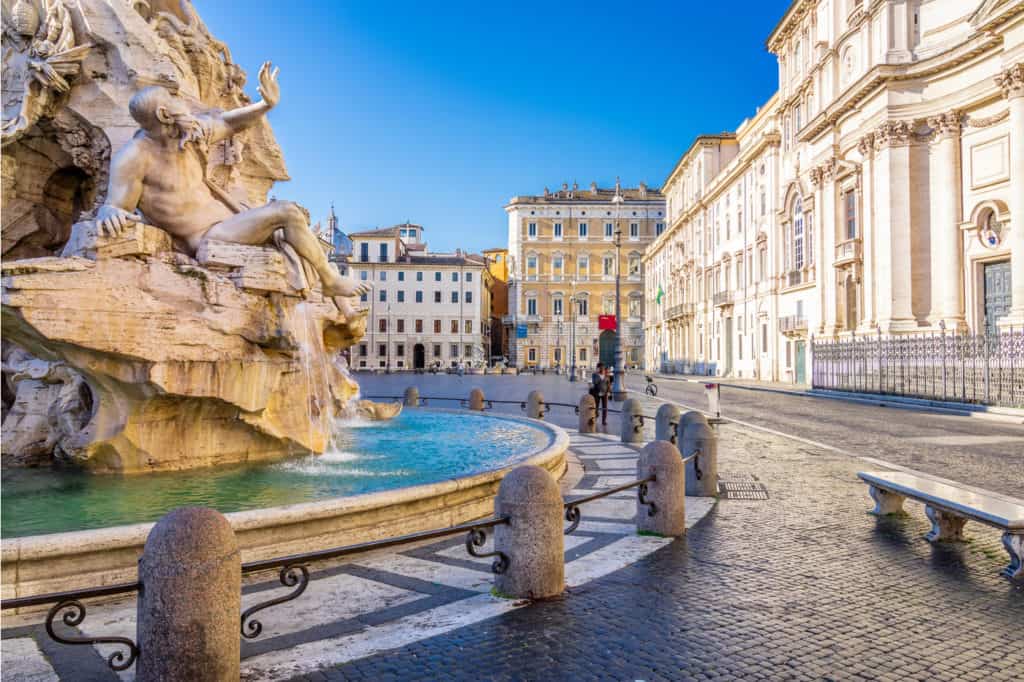
The Cost of Accommodation in Rome
As always with travel, it’s possible to cut your accommodation costs down to zero if you have the time and patience to seek out an offer.
Couchsurfing exists in Italy — and, of course, Rome — and lets you stay with a local for free, sleeping on their sofa and enjoying a local’s insight into life in their country. It’s not the most comfortable of living situations, but if your budget is tight, it’s worth sending out a few requests to hosts to see if anything comes of it. You can search for potential hosts on the Couchsurfing site.
Housesitting is another option. This is where you’ll take care of somebody’s house for free while they’re away, and usually look after their pets, too. It’s best for long-term travellers or retirees: because you can’t pick and choose dates and destinations, you need to have a lot of flexibility as to where you go and at what time of year. If you do have that freedom, it’s a wonderful way to cut down your travel expenses, soak up some home comforts, and live like a local for a while. Trusted Housesitters is one of the best sites for getting started with housesitting.
I’m suspecting, though, that for most of you, you’re not interested in the free accommodation and just want somewhere clean, safe, and affordable to rest your head each night. If that’s the case, there are several options available for you.
The first of these are hostels. There are several dozen of them spread across the city, and even though prices have risen since the pandemic, they’re still one of the best ways to save money on accommodation.
Hostels in Rome are on a par with the rest of the major cities in Western Europe, and you can expect to spend around €50 a night for a dorm bed in a well-reviewed hostel in Rome, with the price increasing to about €65 a night for the absolute best of the best.
When it comes to private rooms in hostels, prices are a bit all over the place. I’ve seen places charging as much as €200 a night for these, at which point you’re better off staying in a nice mid-range hotel, but there are also a few good options where for around €100 a night you get a clean, basic room in a good location close to the Vatican. This works out cheaper than getting two beds in a dorm, with a lot more privacy!
If you’re an older traveller and put off by the thought of nights spent in hostels, you shouldn’t be! Private rooms are usually very quiet and clean, and most hostels are modern, safe, and centrally located. They tend to have a little more personality than generic hotels, and the staff are fantastic at offering kickass travel advice. As long as you check the reviews of any hostel before booking it to make sure nobody refers to it as a party hostel, you’re all good to make a booking there.
I use HostelWorld to find the cheapest hostels, as they tend to have the greatest number of listings at the lowest prices.
And, of course, there are always hotels and guesthouses, which usually start at around €150 a night for a decent, clean, mid-range property in a good location, and go up from there. I always use Booking, as they have the most accommodation options for the cheapest prices.
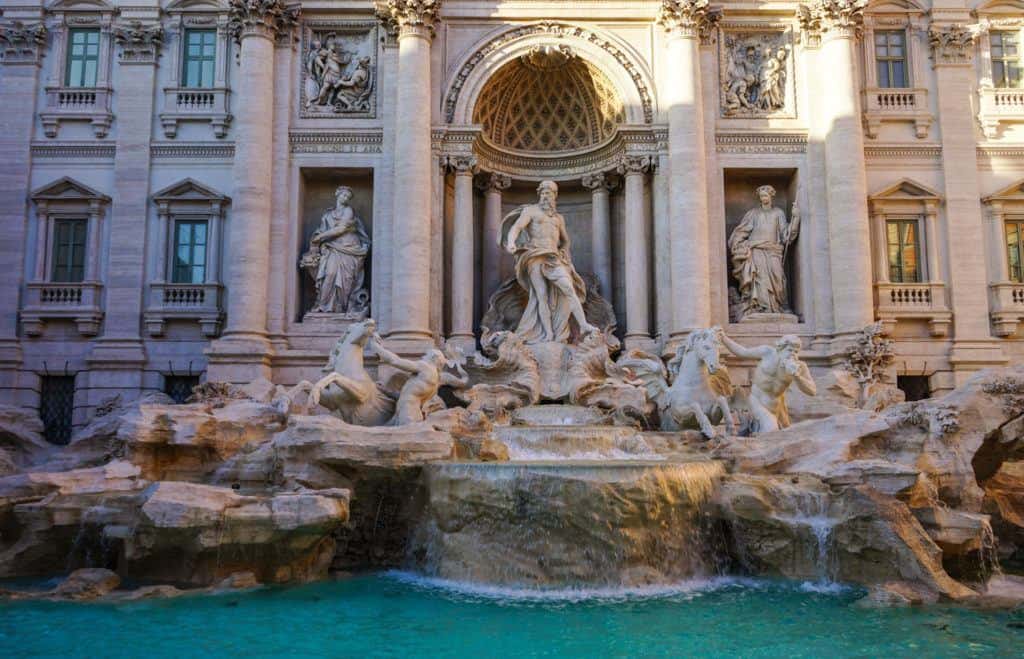
The Best Accommodation in Rome
Since we all travel on different budgets, I’ve broken down my recommendations into several price brackets. They’re all some of the best places to stay for the money, offering great value and with something about them that makes them stand out from the other thousands of places to stay in the city.
The best hostel in Rome: Comics (€57 per night for a dorm bed, €111 per night for a private room)
Most of the best hostels I’ve stayed in have a unique quirk or unusual vibe that sets them apart, and Comics is definitely no exception. From the arcade machines in the common areas to the comic-themed rooms (my favourite is the Super Mario room!), this is about as far from a generic corporate hostel as you can get. It’s well-priced, super-clean and tidy, in a handy location only a ten minute walk from the Vatican, and the owner is full of useful advice on where to eat and what to do in the local area. If you’re after a simple yet memorable place to lay your head in the Eternal City, this is the one.
The best budget hotel in Rome: Il Leoncino (€110 per night)
It’s easy to spend a small fortune on accommodation in Rome these days, but there are still a few excellent budget options left out there. Il Leoncino is a great example, a delightful B&B run by the lovely Tommaso that’s an easy walk to the Vatican and close to a metro station that takes you all over the city. The rooms are spacious and simply but tastefully decorated, with clean, modern bathrooms that have great water pressure: that’s definitely not something you always find in old European cities! You’ve got the option of adding a delicious breakfast at a nearby cafe for a few euros; the coffee there in particular is excellent. There are a whole bunch of other good, inexpensive restaurants nearby as well, so you can eat well without breaking the bank.
The best mid-range accommodation in Rome: Parioli Luxury Suite (€203 per night)
As with many European cities, a lot of the places to stay in Rome are very small. That’s definitely not an issue at Parioli Luxury Suite, which has spacious one-bedroom suites for the same price as many hotel rooms. If you’re travelling as a family or group, you’ve got the option of setting up the sofa as a second bed, making it an even more affordable option. There’s a fully-equipped kitchen, with everything from a full-sized oven to a washing machine: it feels more like a home than a short-term place to stay. It’s in a quiet neighbourhood just north of Villa Borghese, a huge, lovely park that I spent many hours wandering around on my last trip. Strolling through it to get to the heart of the old city is a delight and takes about an hour, but if you don’t fancy the walk, there’s a bus stop a couple of minutes away from the accommodation as well.
The best luxury hotel in Rome: Ricciardelli Luxury Studios (€450 per night)
Of all the endless attractions of this incredible city, the Spanish Steps are some of the most well-known, and right near the top of every visitor’s list of places to visit. If you stay at Ricciardelli Luxury Studios, you don’t have to go far to see them: they’re less than a one-minute walk away! That also means that all the other world-famous sights are nearby as well, from the Trevi fountain to the Forum, the Pantheon to the Colosseum and more. When you return after a day exploring the city, you’ll agree with the “Luxury” in the hotel’s name: from the marble bathroom to the high-end linens and stylish decor, it’s obvious that a lot of effort goes into making this place as comfortable as possible. Despite its unbeatable location, it’s extremely quiet: none of the outside noise makes it through the thick walls and glazed windows. You’ll likely spend a bit of time beside those windows: the panoramic views over the city are incredible! Even the continental breakfast is high-end, paired with fresh juice and quality coffee. Sure, you’re paying a bit more to stay here, but it’s absolutely worth the money!
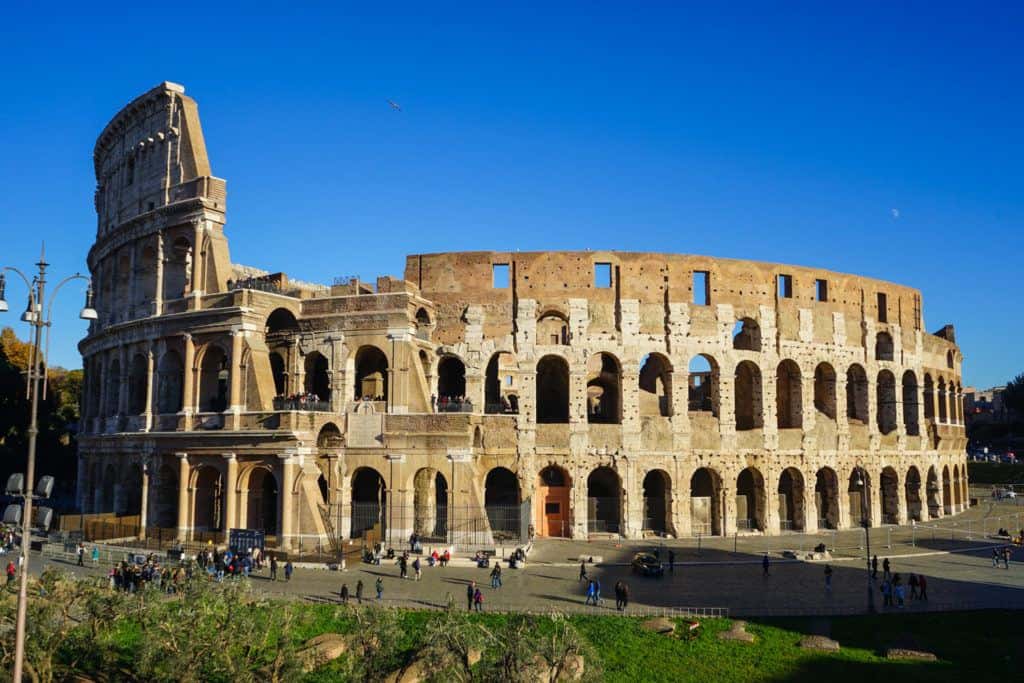
Transportation
Rome is one of Europe’s major airport hubs, making travel to and from simple and cheap. Many airlines fly there directly from the US, UK, and elsewhere in Europe, and it’s not hard to find flights from Asia and the Middle East as well. I always use Skyscanner, because it lets me search across an entire month to find to find the cheapest days to fly. That single feature has saved me thousands of dollars over the years!
Here are a few example prices for round-trip fares in shoulder season, with direct flights:
- Round trip from London – €40
- Round trip from Paris – €61
- Round trip from NYC- €506
- Round trip from Amsterdam- €197
- Round trip from Abu Dhabi – €200
Once you arrive, getting around is easy and inexpensive. The metro is somewhat limited, with only three lines that run diagonally across the city, but the good news is that most of the famous attractions still have a metro station nearby. If you can’t get to where you’re going by metro, don’t worry: trams, buses, and urban trains fill in the gaps.
Buses are frequent and go everywhere, and if you’re flying into Rome’s main airport, you’ll likely take the delightfully-named Leonardo Express train (€14) from there to Termini station. You’re less likely to end up on a tram, though: they’re mostly used by locals, since they don’t really go past the main tourist attractions.
A single ticket on the metro, bus, urban train, or tram costs €1.50, and gives unlimited transfers for 100 minutes. A day pass costs €7 and lasts until midnight, and there are two-day, three-day, and weekly options available as well. That seven-day pass costs €24, so if you expect to be travelling around the city for more than three days, you’ll save money with it.
You can buy tickets at metro station ticket offices and machines, or at convenience stores and newsagents. For single rides it’s also possible to tap your credit or debit card on the reader, or use contactless payment on your phone: you can find all the details here.
Taxis are always available in tourist areas, typically at taxi ranks, but the drivers are known to be more than a little shady at times. Taxis in Rome are white with a taxi sign on the top and a meter in the front of the car: make sure yours has “Comune di Roma” printed on the site. Getting to and from Fiumicino Airport is a fixed fee of €50 for up to four people with luggage, so just confirm that before you get in. If a driver tries to charge you more, just leave and try the next.
Uber exists in Rome, but only as a way of hiring luxury vehicles, not as a taxi replacement. You can use it if you like: it’ll be a more comfortable ride, but will cost you more. If you’d like to use a taxi app instead of negotiating with a driver on the street, check out Free Now: it calls the taxi for you, confirms the price, and lets you pay by card.
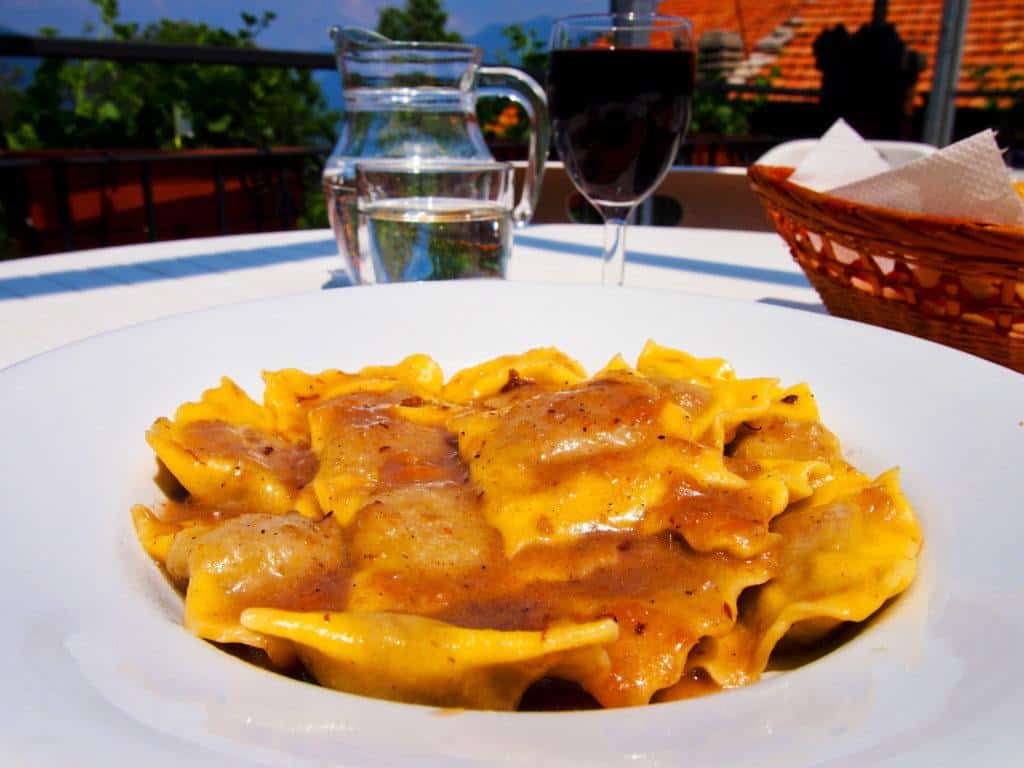
Food
Italian food needs no introduction, and Rome is arguably the best place in the country to eat it. The cuisine is a lot more varied than what you might imagine–local dishes from Como in the north are very different from those in Sicily in the south–but Rome is where you’ll have a chance to try them all.
The first thing that comes to mind is probably pasta, and so it should be. The sheer number of different varieties means you could try a new one for every meal on your trip and still not run out of options, but my suggestions for getting started are rigatoni carbonara, bucatini amatriciana, and of course, spaghetti. Trust me, the spaghetti in Rome is nothing like what you’re used to back home! Expect to pay €9-13 in a traditional family-run trattoria or osteria, which is the best place to try it.
Breakfast in Rome tends to be a quick and simple affair, often just a sweet pastry and a coffee. Head to a local cafe and keep an eye out for maritozzo, a a fluffy brioche bun filled with whipped cream and often dusted with powdered sugar. Expect to pay around €2 for one; pair it with an espresso (around €1) and you’ll feel like a local.
Note that those prices are based on drinking your coffee at the bar and getting your maritozzo to go; you’ll pay more for everything if you sit down to eat it. Likewise, you’ll usually pay more to sit outside or on a terrace than indoors: if you’re not sure, double-check whether there are different prices, especially in popular tourist areas.
A typical Roman lunch consists of bread, pasta, and wine. Depending on the café or restaurant and how high-end your wine tastes are, it will cost you anywhere from €14 to €20 or more: I’d recommend opting for house wine in general, since it’s very drinkable and tends to be cheaper.
Pasta is often on the menu for dinner as well: it’s typically treated as a starter or first course, so the serving size is typically smaller than what you might get in the US. That’s where the second course comes in: it’s typically a meat or seafood dish, usually with an optional side of potatoes and vegetables that’s priced separately. Expect to pay €12 to €20 for this, depending on the quality of the meat or seafood, and around €5 for the sides.
Street food is a terrific option to save some money. A panini from a street vendor will cost you €6 and come in a variety of options, and a slice of pizza can also be very cheap. Note that it’s usually sold by weight rather than by slice, so you can choose how much you want and the vendor will cut it to size for you. As a rough estimate, a large slice will set you back €2-4.
If you want a pizza dinner in a restaurant, expect to pay more like €10-12 for a crispy thin-crusted masterpiece, €4-5 for a beer, and €3-5 for a glass of house wine.
And then there’s dessert. And by dessert, I mean gelato. It’s not the only game in town when it comes to sweet treats, of course, but it’s incredibly popular for a reason. You’ll find great gelato in every neighbourhood, and at just €2-3 a scoop, there’s no excuse for not having it all the time. I ended up eating it after nearly every meal, trying a different store each time so I could have as many flavours as possible!
Tipping in Rome isn’t a requirement. Outside a few tourist restaurants, service charges aren’t added, and when you look at your bill, what you see is what you get. If you want to add a few extra euros for great service, feel free, but it’s not expected.
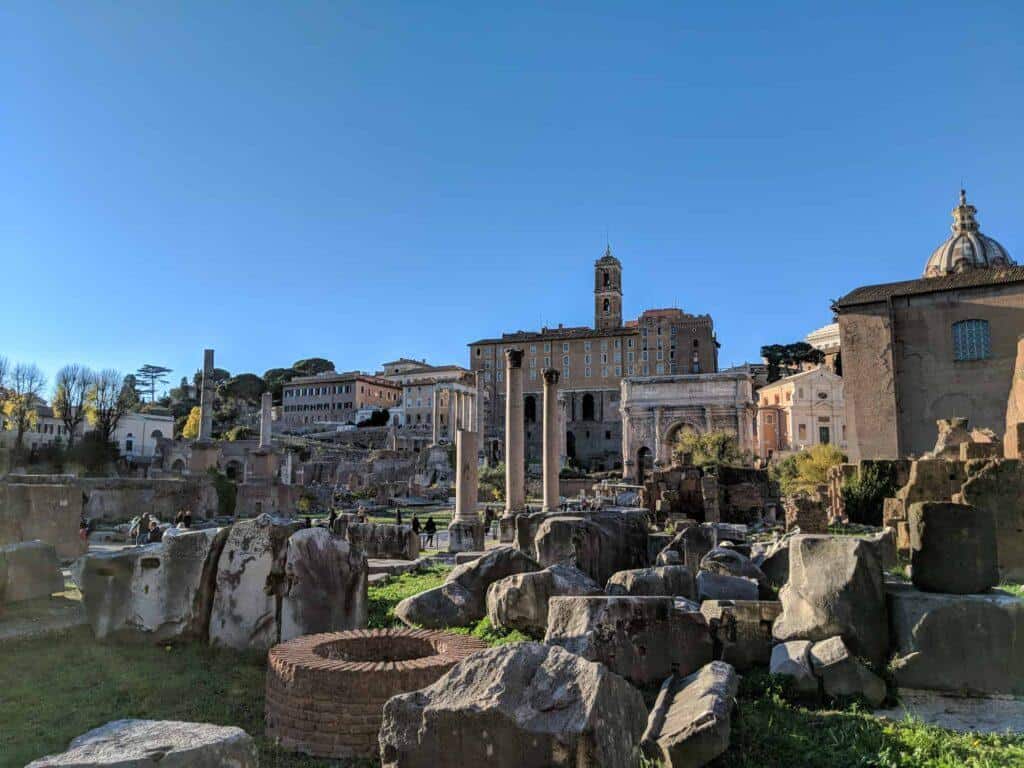
Activities
When it comes to getting out and seeing the city, the itinerary can range greatly depending on your interests. Sightseeing happens when you simply walk from one destination to the next, taking in the ruins that lift the historical ambiance to a new level. Decrepit stone ruins neighboring 21st century structures might throw your mind into a tizzy. Food and wine tours are a classic way to feel like a local by experiencing Rome by taste. History fanatics prepare
yourselves- museums and churches are floating in ancient and everlasting antiquity. When you’re ready for some new scenery, get out of town and see the natural beauty of the Tuscany countryside or the unbelievably stunning Amalfi Coast.
Vatican City is a must see merely from the intriguing religious culture and impact the church still has on the city. Technically, the area is considered a country, the smallest one, in fact, at 109 acres. Once you’re inside the magnificence and wonder of the City the art and architecture are stunning and memorable. In fact, Michelangelo’s creations can be life changing if you let them. Admissions into the Vatican Museum and Sistine Chapel start at $24.
Ready to step into the movie Gladiator? The reality of what went down in the Colosseum is humbling, making any patron feel small (and maybe even a bit scared??) as they take in the impressive surroundings. A single day admission is $20 but if you want an audio tour it will cost you $32.
See the list below for a variety of activities that will heighten your Roman experience:
- Pompeii Ruins & Mt Vesuvius Volcano Day Trip from Rome– $145
- Colosseum Underground Guided Tour– $96
- Vatican and Colosseum Combo Tour– $121
- Tuscany Countryside Day Trip including 3-Course Lunch & Wine Tasting– $157
- Pasta Class – Fettuccine Making in Rome– $60
- Half-Day Food and Wine Tasting Tour in Rome– $96
The Cost of Travel Insurance in Rome
If you’ve read any other posts on Never Ending Footsteps, you’ll know that I’m a great believer in travelling with travel insurance. I’ve seen far too many Go Fund Me campaigns from destitute backpackers that are unexpectedly stranded in a foreign country after a scooter accident/being attacked/breaking a leg with no way of getting home or paying for their healthcare. These costs can quickly land you with a six-figure bill to pay at the end of it.
In short, if you can’t afford travel insurance, you can’t afford to travel.
Travel insurance will cover you if your flight is cancelled and you need to book a new one, if your luggage gets lost and you need to replace your belongings, if you suddenly get struck down by appendicitis and have to be hospitalised, or discover a family member has died and you need to get home immediately. If you fall seriously ill, your insurance will cover the costs to fly you home to receive medical treatment.
I use SafetyWing as my travel insurance provider, and recommend them for trips to Italy. Firstly, they’re one of the few companies out there who will actually cover you if you contract COVID-19. On top of that, they provide worldwide coverage, don’t require you to have a return ticket, and even allow you to buy coverage after you’ve left home. If you’re on a long-term trip, you can pay monthly instead of up-front, and can cancel at any time. Finally, they’re more affordable than the competition, and have a clear, easy-to-understand pricing structure, which is always appreciated.
With SafetyWing, you’ll pay $1.50 a day for travel insurance.
How Much Does It Cost to Travel in Rome?
Accommodation: €141 per day between two (€70.50 per person)
Transportation: €6 per day
Food: €48 per day
Activities: €25 per day
Total amount spent per day: €149.50
Related Articles on Italy
🇮🇹 Top Things to Do in Milan
🏛 23 Things to Do in Rome, Italy
🚤 53 Best Things to Do in Venice
🛬 How to Make the Most of a Layover in Venice
🍕 The Absolute Best Things to Do in Florence, Italy
🍹 21 Incredible Things to Do in Bologna, Italy
🍝 23 Magical Things to Do in Siena, Italy
🍷 16 Amazing Things to Do in Lucca, Italy
🎉 Liberazione: What to Expect From Italy’s Liberation Day

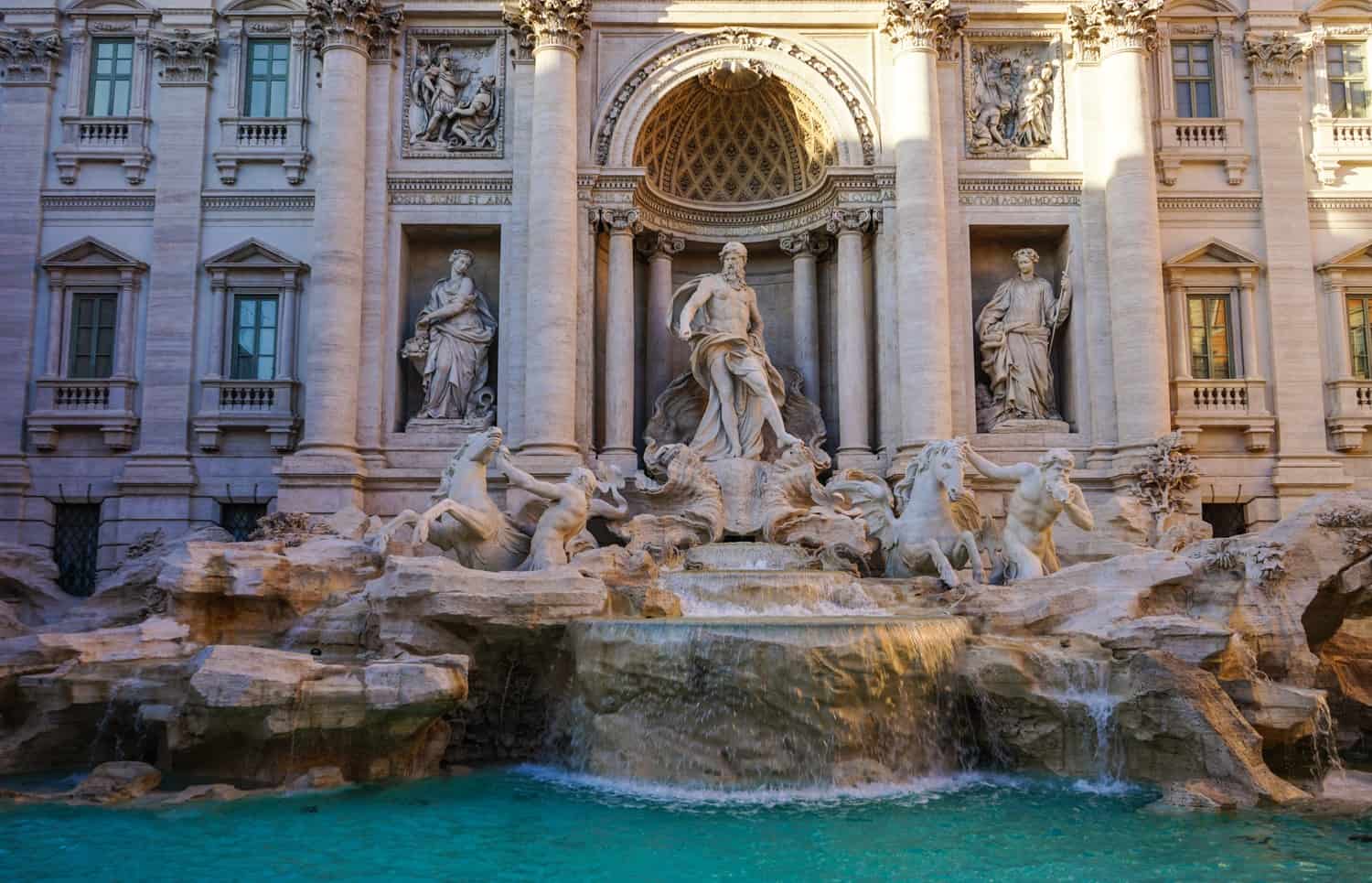






No Comment